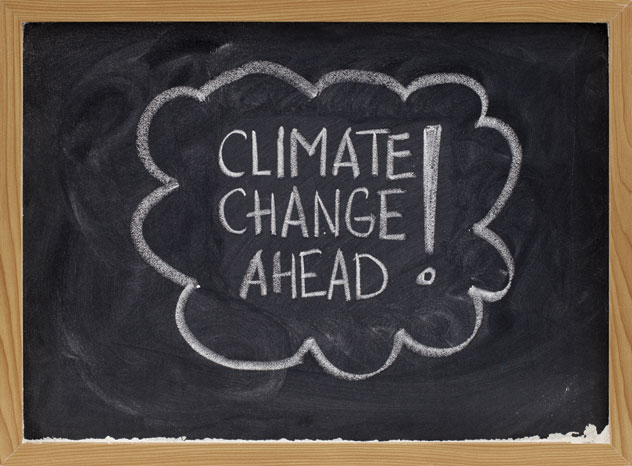ENVIRONMENT
New Lease for India: Salvaging Forward Movement of Kyoto Protocol
The recently concluded UN Climate Change Conference at Durban provided a new lease of life for Kyoto Protocol that came into existence in 1997. As usual, the latest round of climate change talks was soaked in political and moral skirmishes, writes Priyanka Bhardwaj.

An assortment of activists and country-representatives fought fervently over issues ranging from historical responsibilities, common but differentiated responsibilities (CBDR), intellectual property rights (IPR), equity, parity to legal outcome, etc. Such was the pith and intensity of discussions and arguments that the conference had to be extended for two more days.
This was when India was caught center stage but then it dramatically salvaged forward movement of the Kyoto Protocol in true spirit of flexibility and accommodation agreeing to adopt transition to a lower carbon economy similar to western nations and thereby dissolving vestiges of differentiation between developed and developing worlds.
The result was a two page ‘Durban Platform for Enhanced Action’ that commits all nations to a legally binding agreement to cut carbon emissions.
Thus has been obtained a global synergy of national energies till 2015, by when a treaty for an agreed outcome with legal force would need to be negotiated for implementation starting 2020.
However, any substantial gains pertaining to commitments from developed countries to cut down on carbon emissions or securing of about U.S. $100 billion for Green Climate Fund to enable developing countries coping with climate change impact remain elusive as ever.
Looking closely into Protocol, chief botherations of developed world deal with: first, 37 industrialized nations have been held accountable for their “historical responsibility” in contributing to climate change since industrialization; and second, they have been irked no end by current humongous contributions to level of green house gas (GHG) by fast growing Asian economies, India and China.
This was a perfect ruse for the U.S. to abstain from ratification of Protocol especially as China became world’s largest emitter of GHG.
Following this Japan, Russia and Canada too stayed away from further emission reductions even as first term of Protocol neared expiration unless India and China agreed to shoulder their share of burden.
This left the world with a Protocol that would be good enough for eradication of just about 74 percent of global carbon emissions.
At Durban, India came with an attitude to keep its red-line positions of equity and CBDR sacrosanct while willing to assume onus of forward motion.
 Even in past two years India had gone out of its way and against majority opinion of its own citizens, by pledging voluntary emission cuts of about 20-25 percent by 2020 in comparison with 2005 level, and had almost sided with the U.S. whereby negating principle of differentiation between groupings of developed and developing nations. Even in past two years India had gone out of its way and against majority opinion of its own citizens, by pledging voluntary emission cuts of about 20-25 percent by 2020 in comparison with 2005 level, and had almost sided with the U.S. whereby negating principle of differentiation between groupings of developed and developing nations.
But Durban held more surprise in store for India especially when the EU proclaimed its own formula that gave no place to equity and merely mentioned CBDR.
Allegedly the EU had prepared support for its formula from Small Island and Least Developed countries with lure of Green Climate Fund offer, conceived at Cancun.
Monjurul Hannan Khan, a Bangladeshi negotiator, asked India to accept more international obligation as it is way ahead of Bangladesh in terms of capacity and power.
The fact that India is home to more than three thousand people who live below a dollar a day and have no access to basic living amenities and that about 600 islands of the country share the fate of likely submergence as any endangered island nation was totally overlooked.
This elicited strong vocal reaction from Indian experts who called it a western ploy to divide and dominate the developing world.
“It is very bizarre that in the last three years such a concerted effort has been made to separate the most vulnerable countries. It is pitting poor against poor so they cannot speak with one voice,” said Sunita Narain, India’s leading environmentalist.
But Connie Hedegaard, EU’s climate chief was adamant that India needed to declare more action or face EU’s withdrawal from the Protocol.
Earlier a similar tactic had extracted Chinese agreement to ‘EU Roadmap,’ to be drafted by 2015 and set for implementation post-2020.
But this time at Durban, India held its ground with strong support from China whose Vice Minister of National Development & Reform Commission, Xie Zhenhua reiterated that developing economies like India and China were already doing much more than developed countries in fight against global warming.
The logjam thus created was finally broken when India agreed for a global agreement, to be decided in interim Kyoto–II period, starting 2020 and with inclusion of equity and CBDR.
Holding on to the non-negotiable, Indian Environment Minister Jayanthi Natarajan exclaimed, “India has shown more flexibility than any other party. The centerpiece of the climate change action should be equity. Many people have come told me to drop legal outcome and have blamed India for insisting on legal outcome, I was told this would affect the outcome process. India is not intimidated by threats. But what is this legal instrument? How do I give a blank check signing away the livelihood rights of 1.2 billion members of our population?”
Therefore, Durban can at best be called a bargain for India as it won ten more years of an obligation-free economic growth that will need to be replaced with responsibilities that were more of western contribution and never owed up by the U.S. for almost two decades.
Experts have pointed out to the vagueness of Durban climate treaty that may allow varied interpretations.
For India this could be an opportunity as it is not too keen on mitigation in absolute terms.
Yet, within the treaty lies a positive for India: scope for an enhanced adoption of clean development mechanism projects by Indian industry.
Welcoming India’s efforts at Durban, D.S. Rawat, secretary general of The Associated Chambers of Commerce and Industry of India, said that climate change adversities and international pressure on India to mitigate its GHG emissions may have compelled India towards a low carbon growth trajectory but this shall give rise to multiple opportunities by way of sustainable economic growth, infrastructure development through low-carbon technologies, enhanced energy security, green jobs and a leading role in the clean technology sector.
As far as India is concerned, it will have to realign supporters to fight for keeping equity formula in terms of peaking global emissions and IPR and CBDR on the global agenda for these will be determinants of the country’s growth in a post-2020 world.
As prominent nations will squabble over left over global carbon space and total share of responsibilities or emission reductions in absolute terms or to maximum possible limits, while fashioning contours of a new treaty, the moot points will be how emissions reduction will be effected and by when.
|